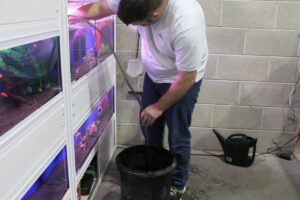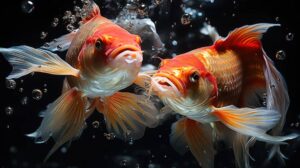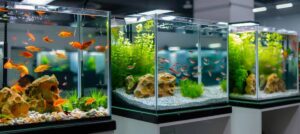The Pets Care Blog
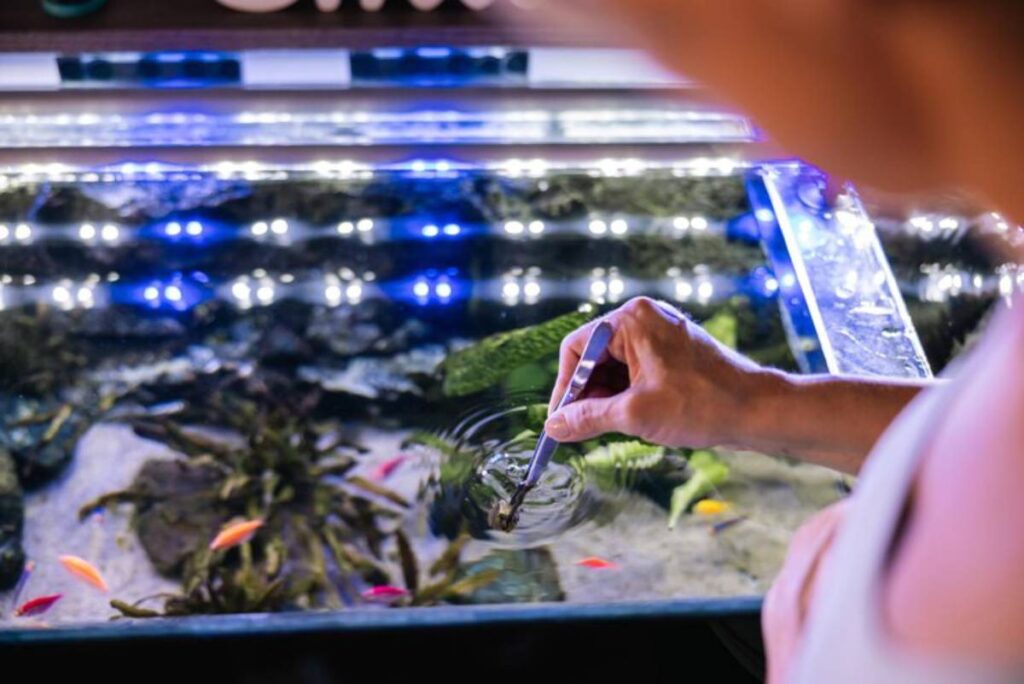
How to Read Water Test Results Like a Pro
Ever tested your fish tank water, only to be left staring at a bunch of coloured squares, wondering what they really mean?
Understanding aquarium water testing is a game-changer for any aquarist, especially when fish health and tank stability depend on invisible factors like ammonia, pH, and nitrate levels. Whether you’re cycling a tank or maintaining an established one, this guide shows you how to read water parameters like a seasoned pro, not just a guesser.
It’s time to ditch confusion and make sense of those test kits with clarity and confidence.
Why Testing Matters: The Chemistry of Fish Health
Water may look clear, but that doesn’t mean it’s clean. Toxins like ammonia and nitrite are invisible and deadly in high concentrations.
Regular water testing allows you to:
- Detect early signs of tank imbalance
- Prevent disease outbreaks
- Adjust filtration or maintenance accordingly
- Keep fish healthy and stress-free
Important: You should test weekly, and always before adding new fish or plants.
Quick Guide: Target Water Parameter Ranges (Freshwater)
| Parameter | Ideal Range | What It Means |
| Ammonia (NH₃) | 0 ppm | Highly toxic — must always be zero |
| Nitrite (NO₂⁻) | 0 ppm | Toxic — indicates incomplete nitrogen cycle |
| Nitrate (NO₃⁻) | 5–40 ppm | Acceptable in small amounts |
| pH | 6.5–7.5 (varies) | Affects fish metabolism and immune response |
| GH | 4–12 dGH | General hardness — minerals in the water |
| KH | 3–8 dKH | Carbonate hardness — stabilises pH |
| Temperature | 22–28°C (varies) | Dependent on species |
Types of Aquarium Water Test Kits
There are two main types:
1. Liquid Test Kits
- Require you to add drops of reagent into test tubes
- More accurate than strips
- Great for measuring precise ammonia, nitrite, and nitrate values
2. Test Strips
- Dip into water for fast readings
- Convenient for quick checks
- Less accurate, especially for ammonia
Pro Tip: Use liquid kits for key readings (like ammonia) and strips for general monitoring.
How to Perform the Tests (General Steps)
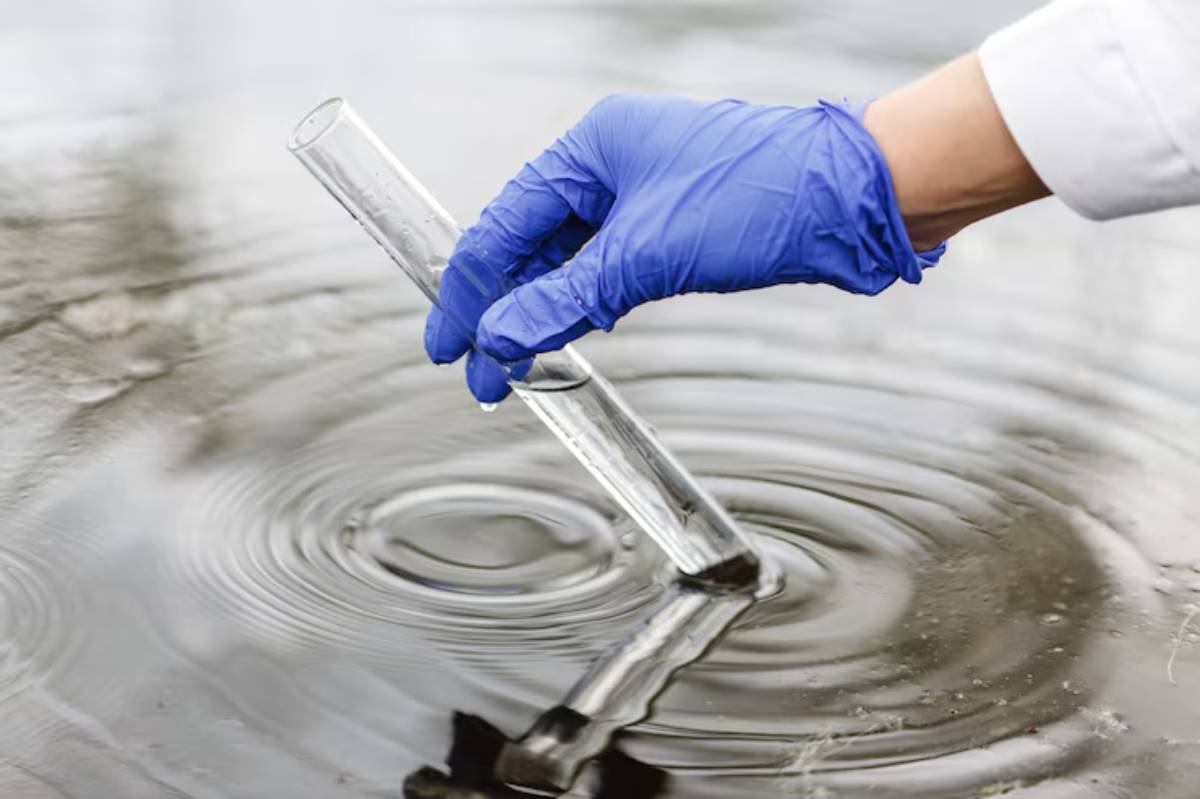
- Rinse test tubes with tank water
- Wash your hands before handling kits
- Follow instructions for exact drops and shake times
- Read the results against the provided colour chart
- Record values for tracking over time
Secret Tip: View results in natural light — indoor lighting can distort colours, especially on nitrate tests.
How to Read Each Water Parameter
Ammonia (NH₃/NH₄⁺)
- Ideal: 0 ppm
- Action Required: Anything above 0 means your tank isn’t fully cycled or something has gone wrong
Symptoms of high ammonia: Red gills, lethargy, fish gasping at the surface
Remedies: Water change, reduce feeding, check filter function
Nitrite (NO₂⁻)
- Ideal: 0 ppm
- Slightly detectable? It means your cycle isn’t complete or has crashed
Symptoms: Dark gills, hovering, stress signs
Remedies: Immediate water change, use bacteria booster, reduce stock load
Nitrate (NO₃⁻)
- Ideal: 5–40 ppm
- High nitrate (>80 ppm): Indicates overdue water changes or overfeeding
Symptoms: Algae blooms, reduced appetite, sluggish behaviour
Action: Regular water changes and vacuuming the substrate
pH
- Target range: 6.5–7.5 (but species-dependent)
Low pH (acidic): Slows metabolism, weakens the immune system
High pH (alkaline): Can cause stress if species aren’t adapted
Avoid sudden pH swings. Always test KH before adjusting pH.
GH (General Hardness)
- Measures: Calcium and magnesium
- Ideal range: 4–12 dGH (depending on fish)
Soft water: Good for tetras, barbs, and bettas
Hard water: Better for guppies, livebearers, and goldfish
KH (Carbonate Hardness)
- Controls: Buffering capacity — stabilises pH
- Ideal: 3–8 dKH
Low KH: Risk of pH swings
High KH: Stable pH, but harder to adjust
Temperature
- Target: Depends on fish species
- Tropical average: 24–26°C
- Coldwater fish (e.g., goldfish): 18–22°C
Use a digital thermometer to monitor changes, especially during summer or winter.
When to Test Your Aquarium Water
Weekly:
- Ammonia, nitrite, nitrate, pH
- Especially during new tank setup or after changes
Monthly:
- GH and KH
- Before adding new plants or fish
After:
- Adding fish
- Changing filter media
- Power outages or unexpected cloudy water
For a practical water care routine, follow our weekly aquarium maintenance checklist.
Analysing Results: Patterns That Matter
High Ammonia + High Nitrite?
You’re mid-cycle. Don’t add fish yet.
Zero Ammonia + Zero Nitrite + Rising Nitrate?
Your tank is cycled — now it’s safe to stock.
High Nitrate + Low KH?
Watch for a sudden pH drop — do a partial water change and check buffering.
Want help interpreting your cycle? Read our guide on how to cycle a new aquarium the right way.
Recording Your Readings Like a Pro

- Use a spreadsheet or notebook
- Track by date and time
- Note recent changes (water changes, new fish, filter cleaning)
Pro Tip: Over time, you’ll recognise trends — like nitrate rising every 6 days, or pH shifting after plant trimming.
FAQs: Reading Water Parameters
Can I test immediately after feeding?
No — wait 1–2 hours after feeding. Food particles can alter nitrate and ammonia readings.
Why do my test results change throughout the day?
pH can fluctuate naturally, especially in tanks with live plants. Test for consistency at the same time each day.
What if colours don’t match the chart exactly?
Estimate in between. Use liquid tests for precision, and test the same spot in good lighting.
Do I need to test with every water change?
Yes, testing ensures the change has improved, not worsened, in your water chemistry.
Conclusion: Clarity Starts With Chemistry
Reading aquarium water test results isn’t just for experts — it’s a skill every aquarist can master. The more you understand your fish tank chemistry, the more proactive you can be in preventing stress, illness, and imbalances.
Trust your test kit, track your results, and fine-tune your aquarium like a professional — because clean water is more than clear water.
Ready to get accurate? Start testing weekly, log your results, and let the data guide your aquarium care, not guesswork.




